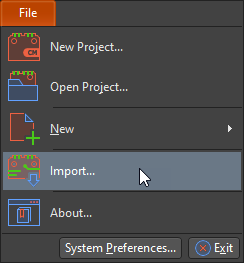RF Interference Prevention and RF PCB Design in the Internet of Things
Have you ever been to a party where there was so much noise you could barely hear yourself think? I’m a dedicated introvert, but sometimes my friends lure me out to such gatherings with promises that it will be “very relaxed.” They never are, and I don’t seem to learn. It’s times like those that I wish it was socially acceptable to wear noise-canceling headphones to such events. In the world of electronics, the burgeoning Internet of Things (IoT) is starting to make the RF spectrum look like a rowdy party. It’s likely that your device is going to have to deal with interference coming from other “things.” Fortunately, it’s acceptable and even recommended, to equip your board with the PCB equivalents of noise-canceling earphones.
Crowded Spectrums
I once threw a party in my house in college. Unfortunately, we lived in a duplex and the neighbors who shared our wall called the cops at 9 PM. If you want to be noisy out by yourself, no one really minds, but many of the most useful spectrums are getting packed out. Even if nearby bands are vacant today, they could be occupied in the near future.
The RF spectrum as a whole is starting to get a bit crowded. Even more so specific bands are chock full of devices. For example, nearly everything we use in our homes runs on 2.4 GHz. My WiFi used to go out when I turned on the microwave until I added some extra shielding. That’s the kind of interference your next IoT gizmo is going to face in the home. It’s not just going to be from the microwave, though, it could come from anyone else’s “smart” widget as well.
Even if you’re working in a relatively quiet spectrum, it could soon become crowded. That’s happening to the mm-wave spectrum right now, as it’s been opened up for 5G and other high speed communication protocols. Just because don’t have to deal with loud neighbors at the moment, doesn’t mean they won’t move in soon.
The IoT is becoming as loud as this child’s birthday party. Give your device earplugs.
Designing for Immunity
You may be feeling as overwhelmed as I do when at a party, but have no fear, there are ways to protect your PCB from unwanted interference.
-
Shielding - This is probably the option you thought of first as well. Shielding your board or its sensitive components greatly reduce the threat of troublesome EMI. While this is the most straightforward approach, it could interfere with your transmissions and will add cost.
-
Proper Grounding - Grounding your PCB well is essential to managing onboard and incoming EMI. If your board is grounded correctly it can reduce the effects of EMI on your board. A complete ground plane can also act as a shield for your circuits. If you want to shield certain components but don’t have the budget for an extra one, use the ground plane instead.
-
Careful Routing - Long high speed routes are notorious for radiating EMI, but they can also receive it as well. Lengthy traces can act as both transmitters and receivers of EMI. Even if your dedicated antenna can reject interference, you may have several unintentional ones that are at risk. Keep your runs short to avoid this problem.
Your primary antenna might not be the only thing receiving incoming signals.
Silence is Golden
Some people don’t know how loud they speak and never realize that they’re the problem. I don’t want to be a buzzkill, but make sure you’re not that person. Your device may be the noisy one, make sure you test it to ensure that’s not the case.
Let’s face it, no one likes dealing with radiated or conducted emissions testing. It’s a huge hassle and can also be quite expensive. If you’re up to the task, though, you can buy or rent your own equipment and take matters into your own hands. Radiation testing requires a good bit of equipment, but it’s not overwhelming. Conducted emissions tests can be simpler to conduct and require less gear. Even if you can’t do everything yourself, a little pre-compliance can go a long way and save you money in repeat visits to a certification lab.
The IoT and the spectrums it operates on are getting more and more crowded. All kinds of devices are radiating EMI, and if you’re not prepared it could affect your device’s operation. Careful PCB level design can help eliminate or at least mitigate the effects of incoming interference. You also need to be certain that your gadget isn’t the one causing problems and bothering other people’s gizmos.
Designing a board that is immune to EMI is a difficult task. When you need to access an easy-to-use PCB layout tool that includes everything needed to build high-quality manufacturable circuit boards, look no further than CircuitMaker. In addition to easy-to-use PCB design software, all CircuitMaker users have access to a personal workspace on the Altium 365 platform. You can upload and store your design data in the cloud, and you can easily view your projects via your web browser in a secure platform.
Start using CircuitMaker today and stay tuned for the new CircuitMaker Pro from Altium.

















